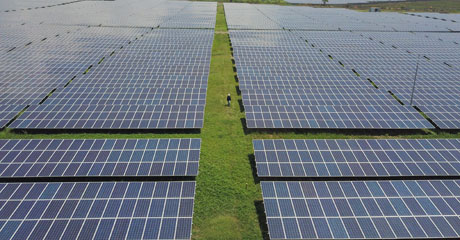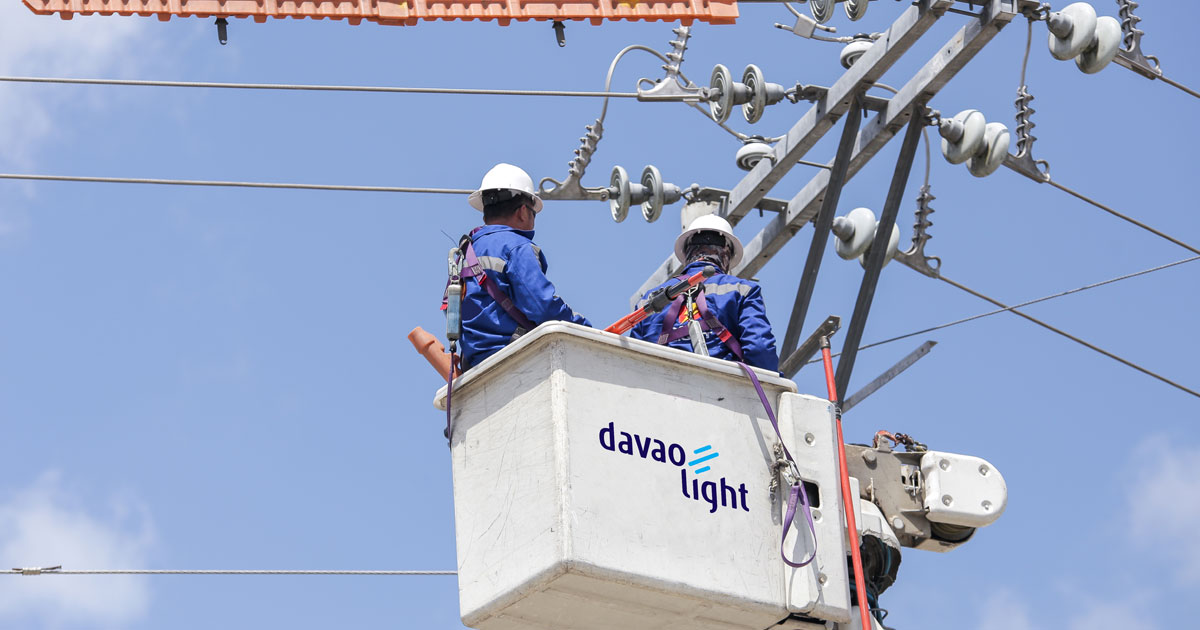Who We Are
AboitizPower is the Philippines’ leading provider of renewable energy, advancing business and communities towards A Better Future.

AboitizPower is the Philippines’ leading provider of renewable energy, advancing business and communities towards A Better Future.

AboitizPower champions sustainability initiatives and ventures that help make the world a better place not only for people living today but for generations to come.

AboitizPower upholds the highest ethical standards, safeguarding the integrity of our initiatives and developments as a business enterprise and a partner for environmental protection.

View our shareholder relations and investment reports and find out how we prioritize addressing the triple bottom line of people, planet, and profit.

Stay updated on the latest stories and developments about AboitizPower.

A Better Future and career await you at AboitizPower. Browse through our job vacancies and join our ever-growing family today!
February 19, 2016

 Aboitiz Power Corp. on Friday (8 January 2016) inaugurated its 300-megawatt (MW) baseload power plant in Davao City, seen by many as an important long-term solution to the Mindanao power supply problem.During the launch ceremony at the power plant site located in Brgy. Binugao, Toril district, AboitizPower CEO Erramon I. Aboitiz said that the project forms part of the company’s commitment to support the growth of Mindanao and indicates the positive impact of government reforms in the energy sector.“Following the project's groundbreaking and construction, other private power producers have started to invest in Mindanao and we hope their entry in the next couple of years will eventually lead to a steady and reliable supply of power in this region,” Mr. Aboitiz said.“For us, this is a strong indication that EPIRA is indeed working and has allowed private investments to come in and help Mindanao secure its power needs. EPIRA has positively transformed our power industry from a monopolized, politicized, and heavily subsidized structure into one that is competitive.”The power plant currently supplies baseload power to more than 20 electric cooperatives and distribution utilities in Mindanao. These cover a significant portion of the power supply to the cities of Davao, Cagayan de Oro, Gen. Santos, Zamboanga, Butuan, Kidapawan, Tagum, Koronadal, Digos, Pagadian, and Cotabato, among others.In addition, the plant supplies power to the Davao region; the provinces of Cotabato, Sultan Kudarat, Agusan and Surigao; the Zamboanga peninsula; and parts of Bukidnon and Misamis.The first unit of the power plant started commercial operations in September 2015 while the second unit is undergoing reliability tests and will be in full commercial operations by February 2016.As it is not dependent on weather conditions, the Davao baseload plant is able to continue generating much needed power even with Mindanao experiencing dry spells caused by El Niño this year and the droughts occurring roughly once every decade.Before the Davao power plant, Mindanao sourced more than 50 percent of its power requirement from government-owned hydro power plants. This caused seasonal power shortages in Mindanao during the dry months.Modern TechnologyThe power plant uses the latest circulating fluidized bed (CFB) combustion technology that minimizes emissions and ensures that the power plant meets Philippine Clean Air Act standards. It houses the country’s first coal dome, which provides a safe and efficient way to store coal fuel.The power plant also uses an Electrostatic Precipitator (ESP), which electrically charges and removes more than 99 percent of dust and other particles from the effluents. A Continuous Emission Monitoring System (CEMS), connected to the Environmental Management Bureau (EMB), monitors power plant emissions in real time to ensure compliance.A Multi-partite Monitoring Team (MMT), composed of NGOs, government agencies and regulators, have been in place since the power plant’s construction stage to ensure that Environmental Compliance Certificate (ECC) conditions are followed and met. Relative to this, the company has established a carbon sink management program in upland Marilog district in partnership with the Matigsalug IP community. Indigenous farmers help AboitizPower in expanding and maintaining a forest ecosystem area that will absorb a significant amount of carbon emitted by the power plant.Push for Renewable EnergyMr. Aboitiz said the Davao power plant will be a reliable complement to Mindanao’s existing hydro power sources. He said renewable energy will and should continue to contribute a significant portion of the power supply, which is in line with AboitizPower’s long-term strategy to provide a balanced mix of energy sources.“Our desire to achieve a balanced mix of renewable and non-renewable energy sources is part of our mission to provide reliable and ample power supply at a reasonable and competitive price with the least possible adverse effects on our environment and our host communities,” he said.AboitizPower is already operating more than 50 MW of hydro power plants in Mindanao through its subsidiary Hedcor. This capacity will soon double with the completion of Hedcor’s 68.8-MW Manolo Fortich (Bukidnon) project in 2017.This year, AboitizPower, in partnership with SunEdison, is also set to inaugurate the 59-MW San Carlos Sun (SaCaSun) solar farm in San Carlos City, Negros Occidental, which will become one of the biggest solar power plants in the country.In tapping geothermal energy sources, the company is also set to start exploration around Mt. Apo and Mt. Sibulan after receiving unanimous support from IP communities and local government units.Construction of the Php35-billion Davao baseload power plant started in 2012 and, at its peak, employed around 4,500 people, a good number coming from local host communities.Mr. Aboitiz also lauded the support from local government units led by Mayor Rodrigo R. Duterte of Davao City and Mayor Joel Ray L. Lopez of Sta. Cruz, Davao del Sur.Likewise, the project has also received backing from the Department of Energy, the Mindanao Development Authority, the Department of Environment and Natural Resources and the Energy Regulatory Commission.
Aboitiz Power Corp. on Friday (8 January 2016) inaugurated its 300-megawatt (MW) baseload power plant in Davao City, seen by many as an important long-term solution to the Mindanao power supply problem.During the launch ceremony at the power plant site located in Brgy. Binugao, Toril district, AboitizPower CEO Erramon I. Aboitiz said that the project forms part of the company’s commitment to support the growth of Mindanao and indicates the positive impact of government reforms in the energy sector.“Following the project's groundbreaking and construction, other private power producers have started to invest in Mindanao and we hope their entry in the next couple of years will eventually lead to a steady and reliable supply of power in this region,” Mr. Aboitiz said.“For us, this is a strong indication that EPIRA is indeed working and has allowed private investments to come in and help Mindanao secure its power needs. EPIRA has positively transformed our power industry from a monopolized, politicized, and heavily subsidized structure into one that is competitive.”The power plant currently supplies baseload power to more than 20 electric cooperatives and distribution utilities in Mindanao. These cover a significant portion of the power supply to the cities of Davao, Cagayan de Oro, Gen. Santos, Zamboanga, Butuan, Kidapawan, Tagum, Koronadal, Digos, Pagadian, and Cotabato, among others.In addition, the plant supplies power to the Davao region; the provinces of Cotabato, Sultan Kudarat, Agusan and Surigao; the Zamboanga peninsula; and parts of Bukidnon and Misamis.The first unit of the power plant started commercial operations in September 2015 while the second unit is undergoing reliability tests and will be in full commercial operations by February 2016.As it is not dependent on weather conditions, the Davao baseload plant is able to continue generating much needed power even with Mindanao experiencing dry spells caused by El Niño this year and the droughts occurring roughly once every decade.Before the Davao power plant, Mindanao sourced more than 50 percent of its power requirement from government-owned hydro power plants. This caused seasonal power shortages in Mindanao during the dry months.Modern TechnologyThe power plant uses the latest circulating fluidized bed (CFB) combustion technology that minimizes emissions and ensures that the power plant meets Philippine Clean Air Act standards. It houses the country’s first coal dome, which provides a safe and efficient way to store coal fuel.The power plant also uses an Electrostatic Precipitator (ESP), which electrically charges and removes more than 99 percent of dust and other particles from the effluents. A Continuous Emission Monitoring System (CEMS), connected to the Environmental Management Bureau (EMB), monitors power plant emissions in real time to ensure compliance.A Multi-partite Monitoring Team (MMT), composed of NGOs, government agencies and regulators, have been in place since the power plant’s construction stage to ensure that Environmental Compliance Certificate (ECC) conditions are followed and met. Relative to this, the company has established a carbon sink management program in upland Marilog district in partnership with the Matigsalug IP community. Indigenous farmers help AboitizPower in expanding and maintaining a forest ecosystem area that will absorb a significant amount of carbon emitted by the power plant.Push for Renewable EnergyMr. Aboitiz said the Davao power plant will be a reliable complement to Mindanao’s existing hydro power sources. He said renewable energy will and should continue to contribute a significant portion of the power supply, which is in line with AboitizPower’s long-term strategy to provide a balanced mix of energy sources.“Our desire to achieve a balanced mix of renewable and non-renewable energy sources is part of our mission to provide reliable and ample power supply at a reasonable and competitive price with the least possible adverse effects on our environment and our host communities,” he said.AboitizPower is already operating more than 50 MW of hydro power plants in Mindanao through its subsidiary Hedcor. This capacity will soon double with the completion of Hedcor’s 68.8-MW Manolo Fortich (Bukidnon) project in 2017.This year, AboitizPower, in partnership with SunEdison, is also set to inaugurate the 59-MW San Carlos Sun (SaCaSun) solar farm in San Carlos City, Negros Occidental, which will become one of the biggest solar power plants in the country.In tapping geothermal energy sources, the company is also set to start exploration around Mt. Apo and Mt. Sibulan after receiving unanimous support from IP communities and local government units.Construction of the Php35-billion Davao baseload power plant started in 2012 and, at its peak, employed around 4,500 people, a good number coming from local host communities.Mr. Aboitiz also lauded the support from local government units led by Mayor Rodrigo R. Duterte of Davao City and Mayor Joel Ray L. Lopez of Sta. Cruz, Davao del Sur.Likewise, the project has also received backing from the Department of Energy, the Mindanao Development Authority, the Department of Environment and Natural Resources and the Energy Regulatory Commission.#####

As one of the Philippines’ largest power producers, we help fill the nation’s growing energy needs by providing secure and affordable access to sustainable power across the country.
Learn more about our businesses
AboitizPower champions sustainability initiatives and ventures that help make the world a better place not only for people living today but for generations to come.
View our sustainability initiatives
View our shareholder relations and investment reports and find out how we prioritize addressing the triple bottom line of people, planet, and profit.
Visit our investor relationsWe use cookies to personalize content and ads, which enables us to analyze our traffic.
If you continue
to use this website, you consent to the use of our cookies.
Find out more here.